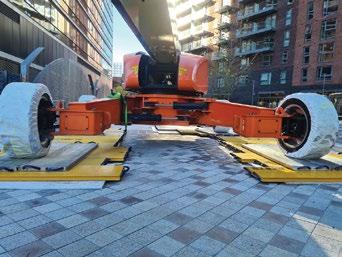
7 minute read
As safe as it can be?
As safe as it can be?
Most people will agree that using an aerial work platform is one of the safest ways to work at height. And yet there are still far too many incidents - many of them fatal - involving platforms, and in particular boom lifts.


Looking back through Vertikal.net over the past year or so reveals a steady stream of news stories highlighting such incidents, most of which fall into three main categories: overturns, electrocution and being thrown from the platform, often due to a collision either from a passing vehicle or a falling load such as a tree limb or steel beam. For more details on incident and platform types, IPAF’s Global Safety Report 2023 presents a comprehensive overview. We also know that neither Vertikal.net nor IPAF’s statistics come close to presenting the full extent of the issue, it is almost certain that the majority of such incidents actually go unreported outside the immediate region.
What is worrying is that the type of incidents and causes are much the same as they were 10 years ago with little sign of change. The top five also include falls from the platform and entrapment. In an effort to reduce incidents, most companies have invested in more training, while IPAF and other associations have instigated numerous safety campaigns. Last year IPAF launched its 'High Voltage!' campaign aimed at reducing the number of electrocution incidents which are particularly prevalent in the United States, due to the greater number of overhead power lines in the country running alongside buildings, trees and communication lines, rather than a lack of training.
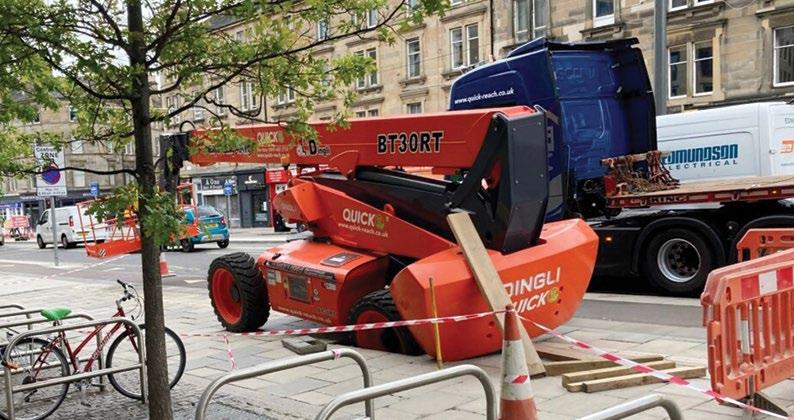
As with all incidents - whether they result in a near miss or a fatality - they are rarely the fault of the equipment, 99 times out of 100 it is down to operator error. Training has of course made a huge difference to the overall safety of the industry with reported deaths declining slowly year on year, in spite of the growing numbers of aerial lifts in use. However, as has been said many times before, training is not competency, and even very competent operators have been known to take a short cut, or ignore procedures and protocols - it is, after all, human nature.
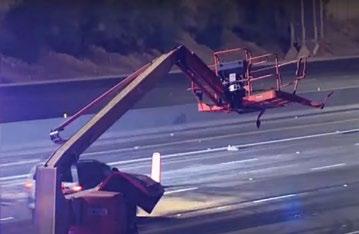

Overturns reducing
For many years outrigger mats and pads- inadequately sized or total lack of - were one of the main causes of incidents, particularly with cranes but also with truck and trailer mounted platforms - machines relying on outriggers for stability. Thankfully the number of incidents has fallen substantially as more users appreciate the need to spread the load.
But at the same time the number of larger self-propelled boom lifts in use has ballooned, along with the number of incidents of overturning, as users struggle to understand the high point loadings these machines apply and the impact that has on differing ground conditions. Contractors are though becoming aware of the risks of moving 100ft plus boom lifts around, or even just working with them was well as when loading and unloading.
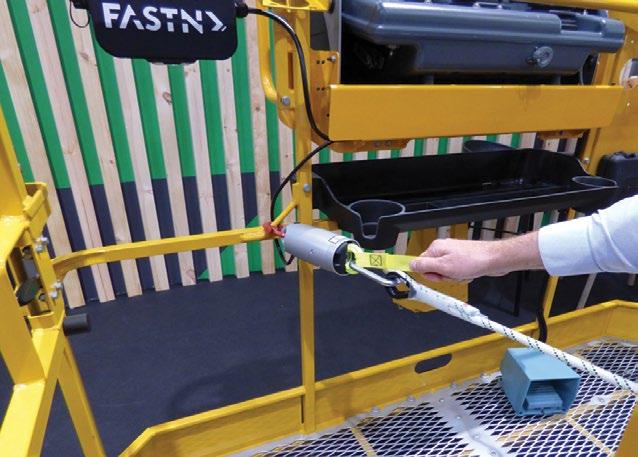
Brilliant ideas
One company that has been spreading the message widely in the past couple of years is UK based Brilliant Ideas with its Alimats product line which includes standard trackway allowing aerial lifts and other heavy equipment to travel across soft ground to a place of work or new site set up. According to Brilliant Ideas, one of the main challenges when developing a solution for a given project is obtaining the datasheet for the equipment in order to find information such as wheelbase, track width and contact area of the wheel on the ground, as well as maximum load applied. Such information is critical to understand the impact on the ground and design an appropriate matting system. See case study below.
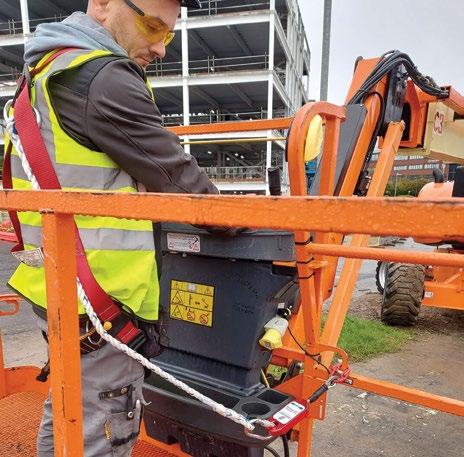
Falls from platform
Falls from a platform are the main cause of reported incidents and fatalities when working at height. Over the years these figures have been reduced by increasing awareness through training and media campaigns of the need to wear a harnesses with a short lanyard attached. Over the past year or so several systems have arrived on the market designed to ensure that harnesses are attached to harness points including Haulotte’s ‘Fastn’ and Nationwide Platforms’ ‘Harness On’ systems.
The latter system hit the news late last year when major UK contractor Willmott Dixon mandated its use on all boom lifts used on its sites. The 'Harness On' system employs a link between the platform anchor point and the lanyard which senses when a lanyard is attached - or not. It is wired into the platform’s controls so that anyone planning to operate the platform must first attach their lanyard to the device thus enabling the controls.
The company said: “Willmott Dixon has teamed up with Nationwide Platforms, which has developed a system called 'Harness On', which works by requiring anyone operating a ‘3b’ boom lift to wear a harness with its lanyard connected to a specific intelligent anchor point within the platform’s basket.”
“'Harness On' is now mandatory, meaning that only 3b boom type lifts with the new system installed can operate on a Willmott Dixon project. This is to reduce to zero the chance that an operator using a platform could fall to the ground because they have not connected their harness correctly.”
The fact that only a small percent of machines were equipped with the system at the time, seems to have escaped the contractor. There is also no mention of alternative systems, such as the more comprehensive 'Fastn' system from Haulotte, which also detects a stricken operator in the platform, and which does not need to be wired into the control box. And according to Haulotte it can be installed on any platform with a foot pedal in around 10 minutes. ■

Case Study
Load spread solution for FK Group
FK Group - working for main contractor Sir Robert McAlpine - needed a solution to spread the ground loadings of a 185ft JLG 1850SJ Ultra telescopic boom lift during finishing works. The boom had to work on recently constructed hard landscaping adjacent to a façade with twin elevations.
The 1850SJ - which weighs in at 27.4 tonnes - has a working height of 58.5 metres, and horizontal reach of 24.38 metres. The overall width and wheelbase change significantly from being stowed for transport when it is 2.49 metres wide - the outside edge of the tyres - to 5.04 metres when working, at the same time the wheelbase goes from 5.52 metres down to 4.59 metres. To allow the axles to swing out into the working position a frictionless layer of two plastic mats were placed above the Alimat modules, a popular solution for this size and type of machine.
“With all mobile work platforms there are two load cases that need considering - tracking and operating. The latter imposes loads similar to mobile crane outriggers, but through the wheels. Both conditions were considered in our proposal and approved for use,” says Brilliant Ideas.
When the machine arrived on site, it was driven between two immovable bollards (Load Case 1Tracking), then onto the platform with the plastic layers where the axles were extended/retracted (Load Case 2). The machine was then driven to its final position (Load Case 3 - Tracking/Operating) where an additional layer of mats was used, which simulates a standard outrigger mat arrangement.
Ethafoam was also used below the mats to ensure they could work as intended by distributing the load evenly and protect the newly laid hardstanding.
